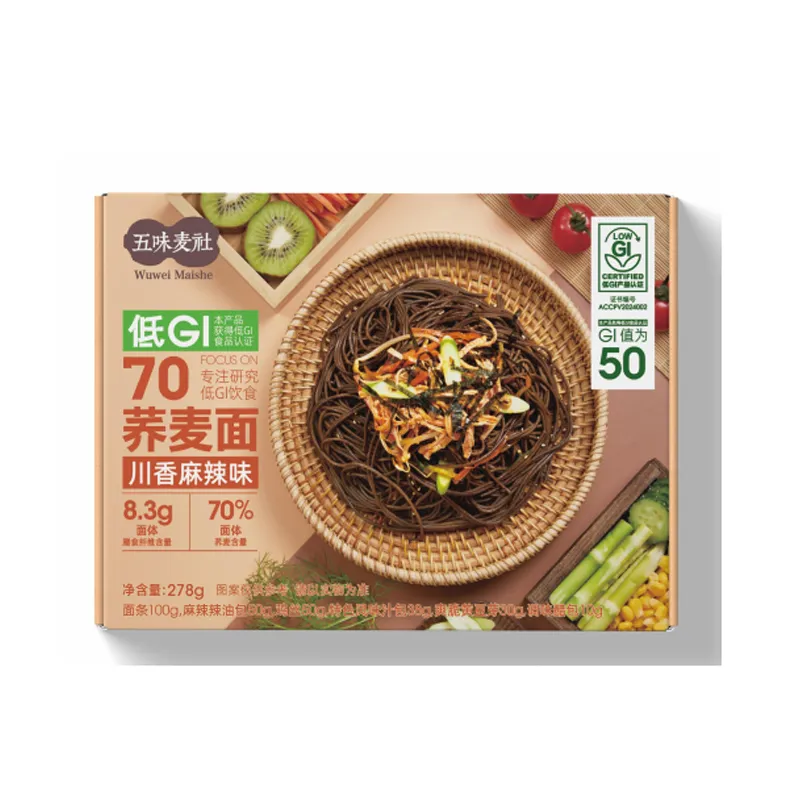soba noodles
The Delightful World of Soba Noodles A Culinary Journey
Soba noodles, a traditional Japanese culinary staple, offer a unique blend of history, nutrition, and versatility. Made from buckwheat flour, these thin, brown noodles have been enjoyed in Japan for centuries and are increasingly celebrated around the world for their delightful taste and health benefits. This article explores the fascinating origins of soba noodles, their nutritional advantages, and various ways to savor them.
A Brief History of Soba
The roots of soba can be traced back to the Edo period (1603-1868) in Japan, where they were consumed primarily for their nutritional value and health benefits. Buckwheat, the primary ingredient in soba noodles, is not a true grain but a seed that is gluten-free and rich in essential nutrients. The humble buckwheat plant was well-suited to the cooler climates of Japan, particularly in regions like Nagano and Yamagata, where it flourished.
As time went on, soba noodle shops sprang up in cities and rural areas alike, becoming a popular choice for meals. Street vendors often served soba noodles in a simple broth, allowing the flavors of the noodles to shine through. Over the years, the appreciation for soba has only grown, transforming it into a beloved dish enjoyed by locals and visitors alike.
Nutritional Benefits of Soba Noodles
One of the defining features of soba noodles is their impressive nutritional profile. Buckwheat is packed with essential amino acids, fiber, vitamins, and minerals. Unlike wheat-based noodles, soba is a rare source of high-quality protein that is gluten-free, making it an excellent option for those with gluten sensitivities or celiac disease.
Soba noodles are also rich in antioxidants and are known for their ability to lower cholesterol levels and improve heart health. Their high fiber content aids in digestion and helps maintain stable blood sugar levels. Moreover, buckwheat is a good source of iron, zinc, and B vitamins, promoting overall wellness.
The low glycemic index of soba noodles makes them a smart choice for maintaining energy levels throughout the day without the crash that often follows high-carb meals. Incorporating soba into your diet can be a delightful way to add balance and nourishment to your meals.
soba noodles

Culinary Versatility How to Enjoy Soba Noodles
One of the most exciting aspects of soba noodles is their versatility in the kitchen. They can be served hot or cold, making them suitable for a wide array of dishes and seasons. Here are some popular ways to enjoy soba
1. Zaru Soba A classic dish served cold, zaru soba is accompanied by a dipping sauce made from soy sauce, mirin, and dashi. It is often garnished with green onions, wasabi, and nori (seaweed).
2. Soba Noodle Soup In colder months, a warming bowl of soba noodle soup is a comforting choice. The noodles are served in a flavorful broth with vegetables, meats, or tofu, catering to various tastes.
3. Soba Salad For a refreshingly light option, soba can be tossed with crisp vegetables and a tangy dressing. Ingredients like sesame oil, rice vinegar, and soy sauce create a deliciously balanced meal that’s perfect for lunch or dinner.
4. Stir-Fried Soba Soba noodles can also be stir-fried with a medley of vegetables, proteins, and sauces, combining flavors and textures that appeal to diverse palates. This method highlights the noodles’ ability to absorb seasonings while retaining their unique taste.
5. Soba with Seasonal Ingredients Soba pairs wonderfully with seasonal ingredients, such as fresh greens in the spring, grilled vegetables in the summer, root vegetables in the fall, and hearty proteins in the winter. This adaptability allows home cooks to get creative in the kitchen.
Conclusion
Soba noodles represent more than just a dish; they embody a rich cultural heritage and a commitment to health and wellness. With their unique flavor, nutritional benefits, and culinary versatility, they deserve a prominent place on dinner tables worldwide. Whether you’re savoring a bowl of hot soba noodle soup or enjoying chilled zaru soba on a warm day, the experience promises to be a delightful culinary journey, one that celebrates flavor, tradition, and well-being. So next time you’re in the kitchen, consider adding soba noodles to your menu; your taste buds and your body will thank you.
-
Unlock the Delicious Potential of Yam NoodlesNewsAug.11,2025
-
The Authentic Taste of Lanzhou NoodlesNewsAug.11,2025
-
Savor the Art of Hand Pulled NoodlesNewsAug.11,2025
-
Indulge in the Timeless Delight of Spaghetti BologneseNewsAug.11,2025
-
Indulge in the Rich Flavor of Braised Beef NoodlesNewsAug.11,2025
-
Elevate Your Meals with the Magic of Fresh PastaNewsAug.11,2025
-
Unleash Your Inner Chef with Delectable Italian Pasta CreationsNewsAug.01,2025
Browse qua the following product new the we

















































































































